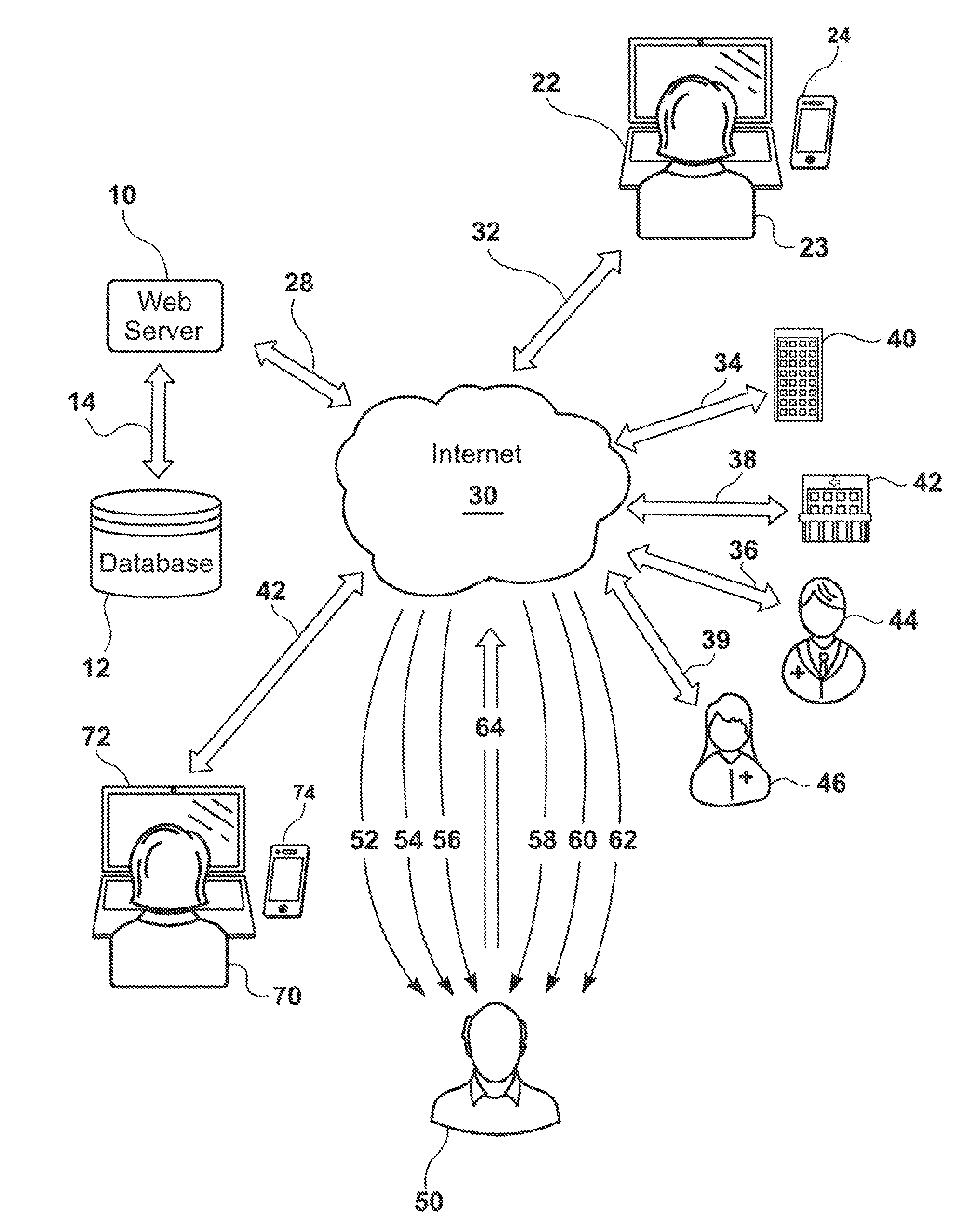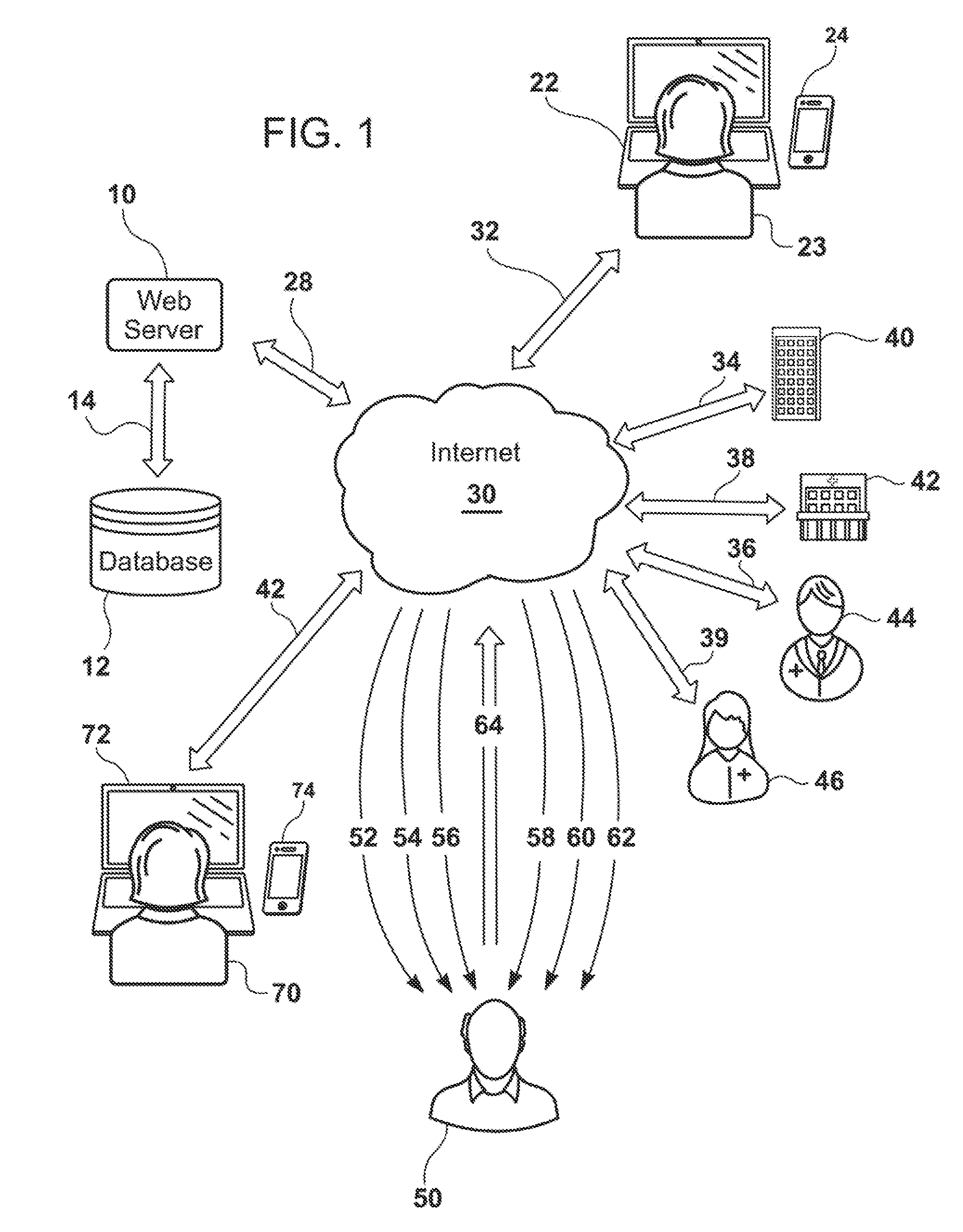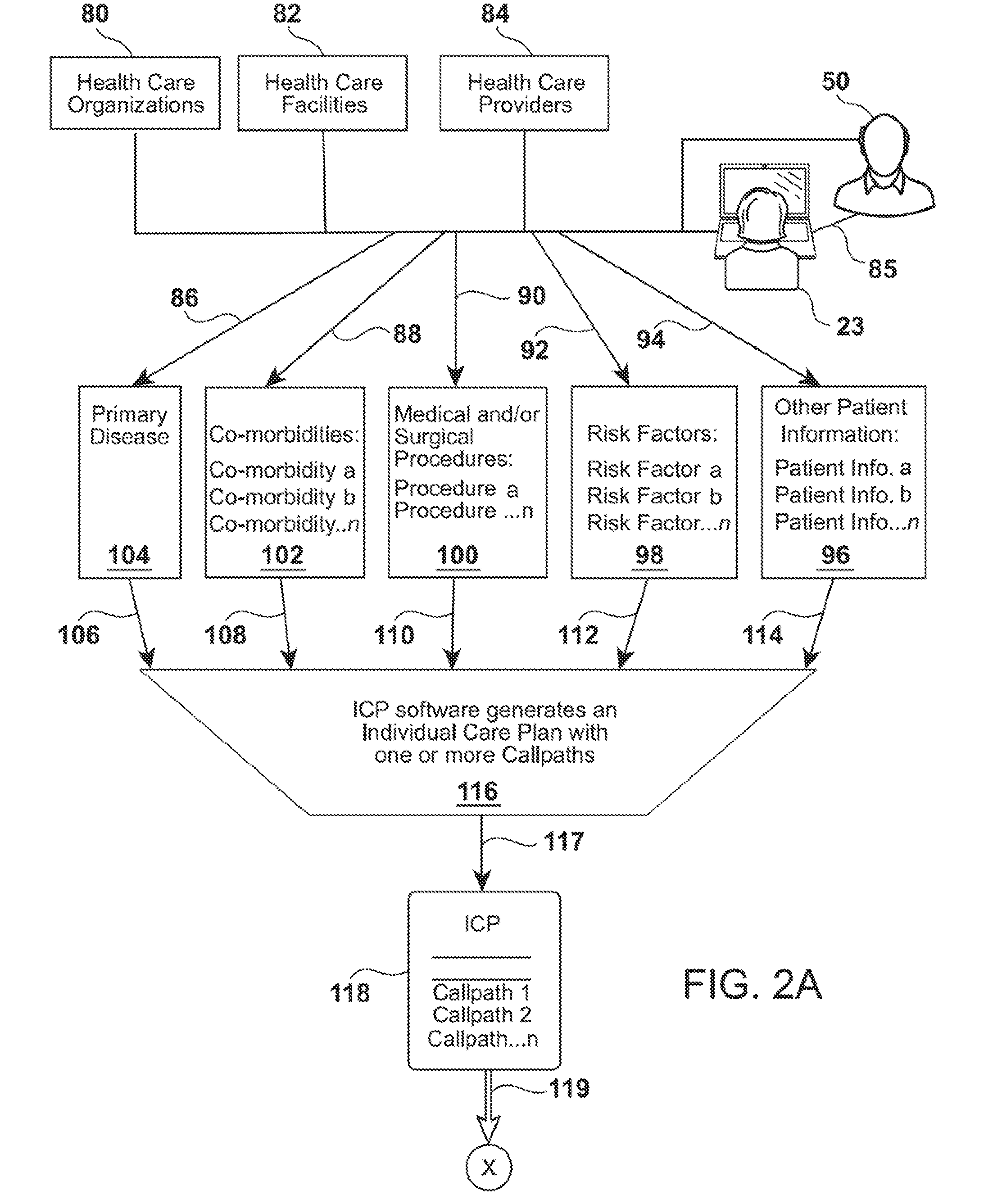Medical Transitional Care Patient Management System and Associated Business Method
a patient management system and medical transition technology, applied in the field of system and business method, can solve the problems of department visits and readmissions, complicated remaining hospital patients, and patients often developing complications
- Summary
- Abstract
- Description
- Claims
- Application Information
AI Technical Summary
Benefits of technology
Problems solved by technology
Method used
Image
Examples
Embodiment Construction
Definitions
[0034]CallPath(s): a specific series of questions and / or statements from the Question Library data table generated by the Individual Care Plan engine based on a patients case mix, risk factors, patient contact information, other patient information, and the type of care transition. Callpaths include valid response parameters for each question, alert parameters for each question and / or question group (s). Alert recipient contact information by question and / or question group(s) and / or Callpath may be assigned within each Callpath. The Callpath questions and statements are communicated to patients via the Engagement engine or live agent, and responses are recorded to a Patient data table. An individual care plan may contain one or more Callpaths, depending on the type and number of care transitions, and / or changes in their case mix and / or other information.
[0035]Co-morbidity is the presence of one or more additional disorders (or diseases) co-occurring, or coexisting, with a...
PUM
 Login to View More
Login to View More Abstract
Description
Claims
Application Information
 Login to View More
Login to View More - R&D
- Intellectual Property
- Life Sciences
- Materials
- Tech Scout
- Unparalleled Data Quality
- Higher Quality Content
- 60% Fewer Hallucinations
Browse by: Latest US Patents, China's latest patents, Technical Efficacy Thesaurus, Application Domain, Technology Topic, Popular Technical Reports.
© 2025 PatSnap. All rights reserved.Legal|Privacy policy|Modern Slavery Act Transparency Statement|Sitemap|About US| Contact US: help@patsnap.com



